Premium Only Content
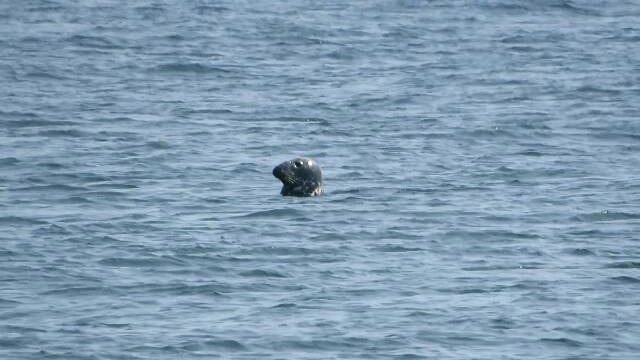
Grey Seal Gets Photobombed By Harbor Porpoise
In the Gulf of Saint Lawrence, you can see grey seals from the beach almost every day. But what you don't usually see is a dolphin in the background casually swimming along! What a lovely surprise! The silly seal seems oblivious to the presence of the porpoise, basking in the June sun, while the porpoise shows up just a few times while breaking on camera. Who knows, maybe the dolphin was equally as oblivious to the presence of the camera.
The Gulf of Saint Lawrence is the outlet of the North American Great Lakes via the Saint Lawrence River into the Atlantic Ocean. The gulf is a semi-enclosed sea, covering an area of about 87,000 square miles and containing about 8,300 cubic miles of water, which results in an average depth of 499 feet.
Did you know that porpoises are also called “mereswine”? The reason behind it is actually pretty cool. “Porpoise” comes from the french “pourpois”, which in term comes from the Medieval Latin “porcopiscus”, a compound of “porcus”, meaning pig, and “piscus”, meaning fish. In Classical latin the are also called “ porculus marinus”, probably because of the fancied resemblance of the porpoise’s snout to that of a pig. The sound the make when breathing also resembles a pig snort.
Porpoises keep close quarters near the polar regions, normally near the coast. One of the smallest marine mammals, the harbor porpoise stays close to coastal areas or river estuaries, and as such, is the most familiar porpoise to whale watchers.
The harbour porpoise species is common in colder coastal waters of the North Atlantic, North Pacific and the Black Sea. The populations in these regions are not constant and are classified as separate subspecies. According to recent genetic evidence, the harbour porpoise population structure may be more complex, and they should be reclassified.
In the Atlantic, harbour porpoises may be present in a curved band of water running from the coast of West Africa to the coasts of Spain, France, the United Kingdom, Ireland, Scandinavia, Iceland, Greenland, Nova Scotia and Newfoundland and the eastern seaboard of the United States. The population in the Baltic Sea is limited in winter due to sea freezing, and is most common in the southwest parts of the sea. There is another band in the Pacific Ocean running from the Sea of Japan, Vladivostok, the Bering Strait, Alaska, British Columbia, and California.
The harbor porpoise is not considered threatened, as their numbers reach hundreds of thousands. However, static fishing techniques such as gill and tangle nets, overfishing, marine and noise pollution, as well as climate change play a big factor in the conservation of this species.
Bycatch in bottom-set gill nets is considered the main mortality factor caused by man for these porpoises. Numbers suggest that several thousand individuals die each year as incidental bycatch. Recently, porpoise-scaring devices, also known as pingers, have been developed to keep porpoises away from these nets. Studies have shown that they present as very effective in reducing entanglement. (source: Wikipedia)
-
 0:33
0:33
NataliaCara
1 year agoWild Maned Wolf roar-barking
3982 -
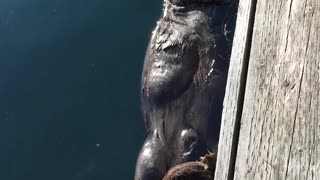 0:57
0:57
ViralHog
5 years ago $0.05 earnedSea Otter in Seldovia Harbor
9.07K -
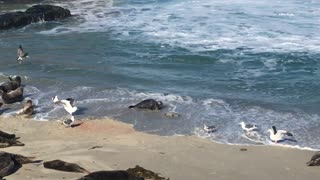 0:38
0:38
ViralHog
4 years ago $0.29 earnedMama Seal Protects Newborn from Seagulls during First Swim
9033 -
 0:24
0:24
giddyUp30s
4 years ago $46.41 earnedWild Grey fox eats apple pie from back porch
15.5K7 -
 4:57
4:57
ViralHog
4 years ago $0.03 earnedMoose Gets Stuck Under a Truck
5973 -
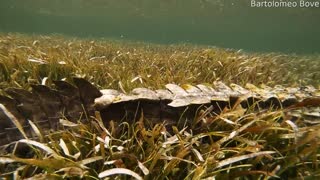 5:16
5:16
ViralHog
4 years ago $0.04 earnedPhotographer Gets Up Close and Personal with Crocodiles
3942 -
 1:22
1:22
ViralHog
4 years ago $262.76 earnedBear Cub Gets in Trouble with Momma
576K -
 1:28
1:28
WildCreatures
4 years ago $3.67 earnedGigantic woodpecker gets respect at the feeder from blue jays
8.74K9 -
 1:12
1:12
WMAR
4 years agoHarbor Point Ice Fest
4 -
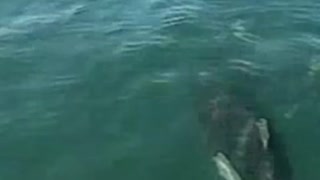 0:30
0:30
Bryce2020
4 years agoDall’s porpoise
25